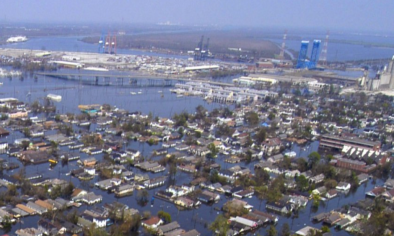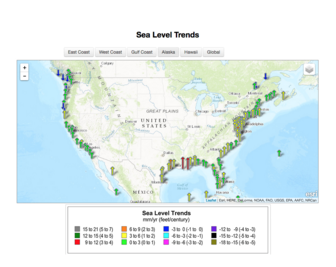Simulations of Hurricane Katrina (2005) under sea level and climate conditions for 1900
Uses observed climate and sea level trends over the last century (c. 1900s to 2000s) to provide insight regarding future coastal inundation trends
Compares the actual impacts of Hurricane Katrina (2005) in New Orleans with the impacts of a similar hypothetical hurricane occurring c. 1900
Uses the estimated regional sea level rise since 1900 of 0.75 m, which contains a dominant land subsidence contribution (0.57 m), as a ‘prototype’ for future climate-change induced sea level rise in other regions
Estimates landform conditions c. 1900 by changing frictional resistance based on expected additional wetlands at lower sea levels
Surge simulations suggest that flood elevations would have been 15 to 60 % lower c. 1900 than the conditions observed in 2005
This drastic change suggests that significantly more flood damage occurred in 2005 than would have occurred if sea level and climate conditions had been like those c. 1900
Goes on to show that, in New Orleans, sea level rise dominates surge-induced flooding changes, not only by increasing mean sea level, but also by leading to decreased wetland area—together, these effects enable larger surges
Makes forward projections and finds that future global sea level changes of the magnitude examined in the study are expected to lead to increased flooding in coastal regions, even if the storm climate is unchanged
Related Content




